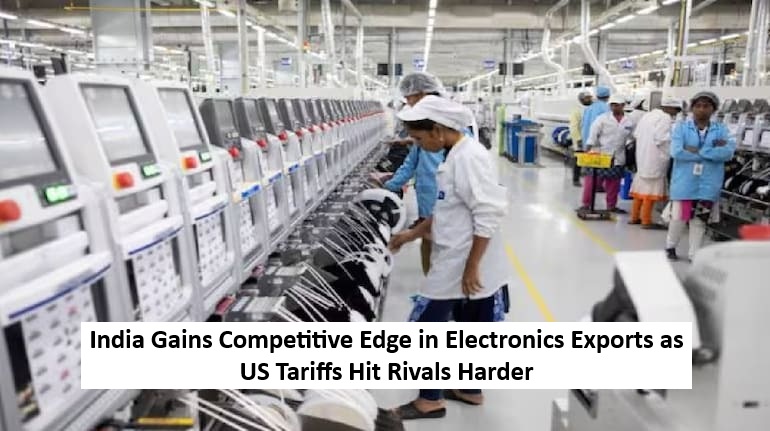
India’s electronics industry views the upcoming US reciprocal tariff rate of 27%, effective from April 9, as a relatively favorable outcome compared to higher rates imposed on competitors like Vietnam (46%) and Thailand (36%).
The India Cellular and Electronics Association (ICEA) emphasized that India has secured a strategic position, especially when measured against nations like China and Vietnam, thanks to persistent negotiation efforts by Indian trade officials.
ICEA Stresses Urgency of Bilateral Trade Agreement
While countries like Brazil and Egypt have slightly more favorable tariff terms, ICEA Chairman Pankaj Mohindroo believes India’s current advantage can be a stepping stone toward securing a Bilateral Trade Agreement (BTA) with the US. A BTA could bring predictability, improved market access, and support the expansion of India’s high-value electronics exports.
Mohindroo added that the focus should now shift to sustaining export growth through strategic policy actions and deeper integration into global supply chains.
Analysts Warn of Global Uncertainty and Consumer Impact in US
According to Counterpoint Research’s Tarun Pathak, the tariffs could disrupt global supply chains and create uncertainty. He warned that the US may struggle to localize electronics production due to a lack of skilled labor and supply chain infrastructure, except in advanced chip manufacturing.
Pathak noted, “The biggest losers in this situation will be American consumers, as product prices are likely to rise while domestic manufacturing remains unrealistic in the near term.”
Industry Calls for Zero-Duty Imports on Select US Electronics
ICEA recommended to the government that India should offer zero-duty benefits in any future trade pact for products like smartphones, wearables, televisions, and appliances. Such steps could drive exports to the US from the current $10 billion to $80 billion by 2030, according to ICEA estimates.
Currently, India imposes a 16.5% basic customs duty (BCD) and surcharge on US electronic imports. ICEA believes reciprocal tariffs at this rate would impact cost advantages and competitiveness.
Tariff Impact on Global Trade Dynamics
Ashok Chandak, President of the India Electronics and Semiconductor Association (IESA), acknowledged the potential risks to India’s growing exports. However, he pointed out that India remains in a favorable position due to the even higher tariffs levied on China, Vietnam, and others.
Chandak emphasized the need for rapid policy responses, trade diplomacy, and industry resilience to navigate the evolving geopolitical and economic landscape.
Read More: Maruti Suzuki Ertiga New Model: 28 kmpl Mileage, Space and Comfort – Dominate all three!

 Share
Share



